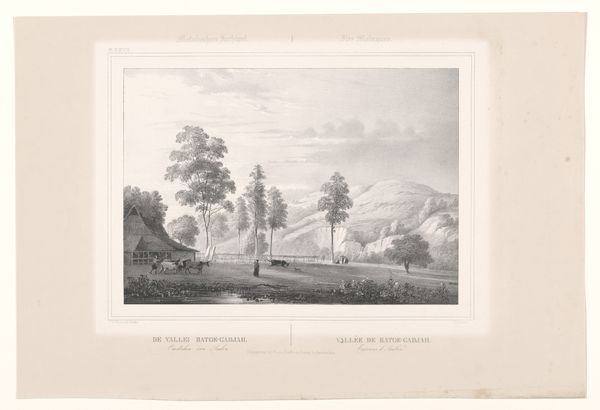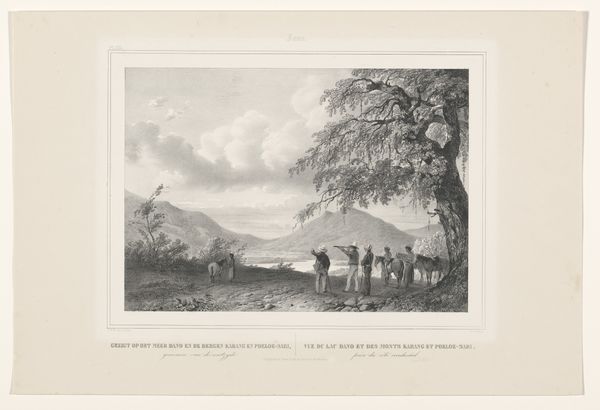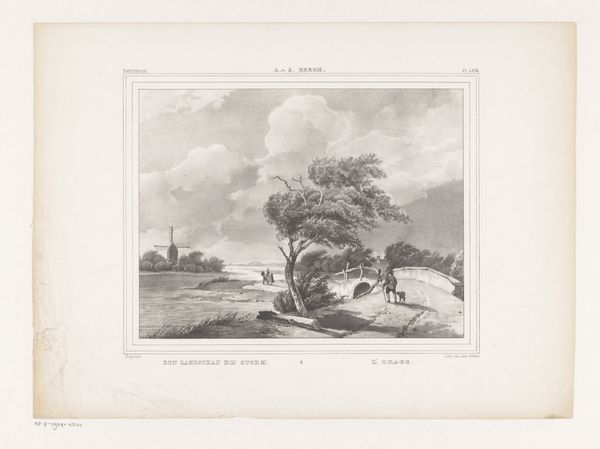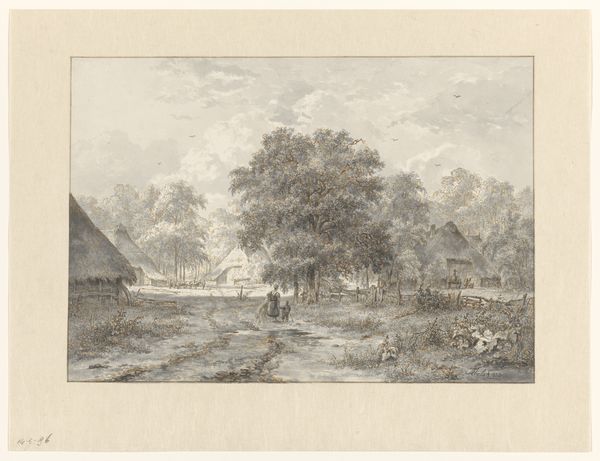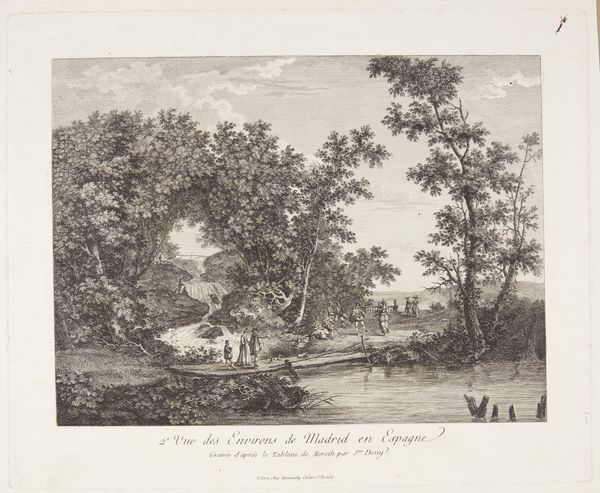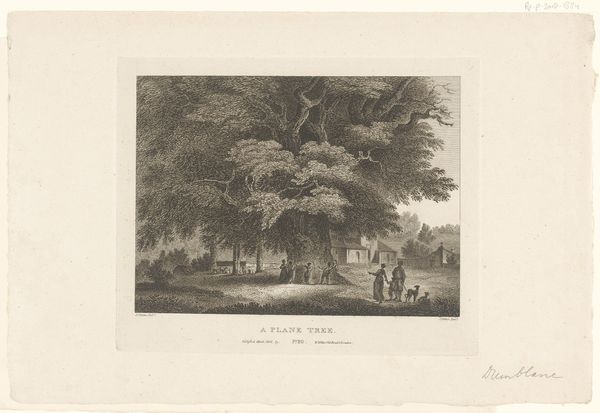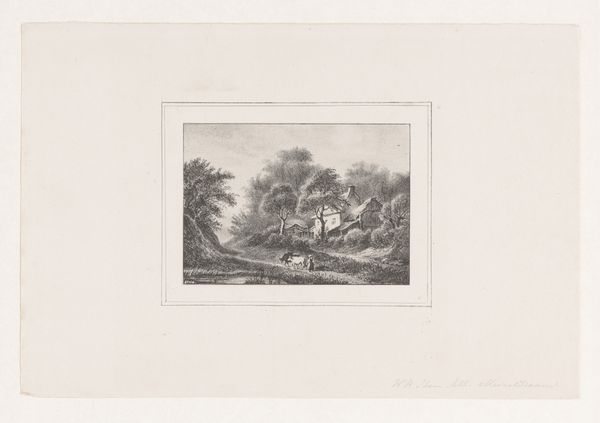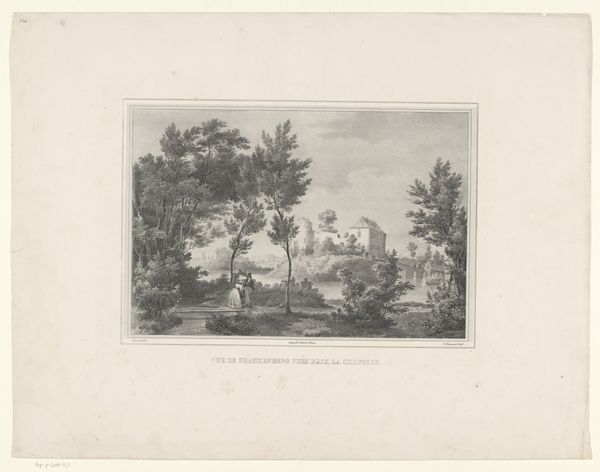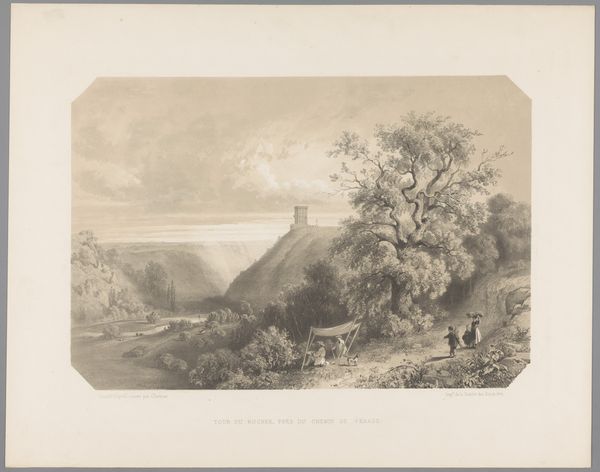
lithograph, print
#
light pencil work
#
pale palette
#
lithograph
# print
#
landscape
#
orientalism
#
cityscape
#
realism
Dimensions: height 345 mm, width 510 mm
Copyright: Rijks Museum: Open Domain
Curator: Here we have "Gezicht op een straat in Serang," or "View of a Street in Serang," a lithograph print by Paulus Lauters, created sometime between 1843 and 1845. Editor: It's quite striking, isn’t it? A muted, almost dreamlike quality with that pale palette, but the precision of the lithography creates this crisp snapshot. What I find intriguing is the street view's flatness, how it recedes into the horizon with meticulous detail. Curator: I’m glad you point that out. As a lithograph, this piece offers a window into the printing processes of the time. Lithography allowed for relatively inexpensive reproductions, and that's vital for disseminating imagery related to colonial governance. The piece served to inform and shape public perceptions about the Dutch East Indies. Editor: Precisely! You see how the people and horse-drawn carriages suggest movement, labor? And what about the figures near the tree? I want to consider this as a material product reflecting the dynamic society shaped by Dutch presence and by Indonesian agency. The landscape is becoming an artifact of this exchange. Curator: Absolutely. Look closer and note that Lauters seems to prioritize an idealized scene. Note how different ethnic groups might be interacting along the street with little sign of the inherent tension of colonial realities. This is intended to construct a particular narrative back in the Netherlands, for consumers of these images. Editor: So the very materiality of the print - its mass reproducibility and consumption, facilitated through lithography, plays directly into constructing a carefully controlled social and political narrative? Fascinating how this blend of artistry and manufacturing creates its own subtle power dynamics. Curator: And understanding that is vital if we want to grapple with how these seemingly simple vistas play within broader socio-political frameworks shaping the Dutch East Indies’ image back home. Editor: I agree. Reflecting on the artist’s means and agency allows me to approach the history it's inevitably entrenched in.
Comments
No comments
Be the first to comment and join the conversation on the ultimate creative platform.

